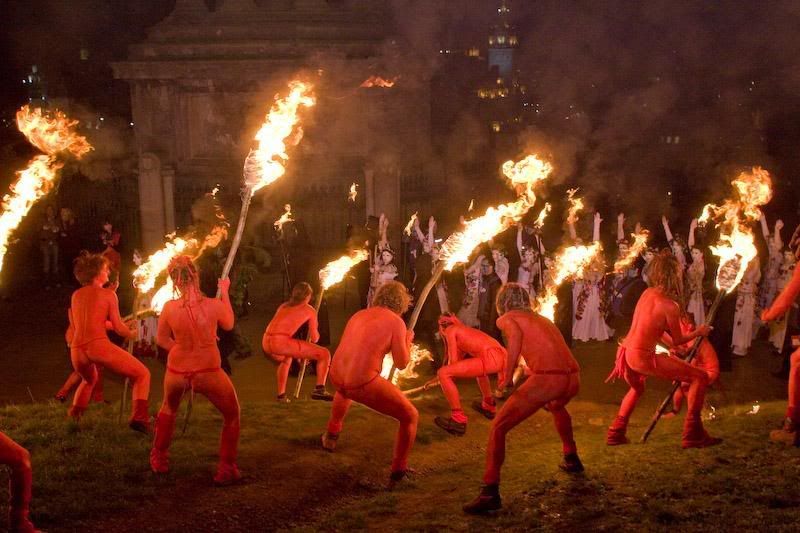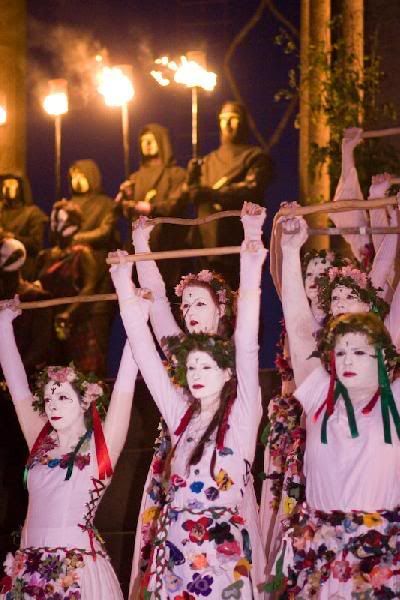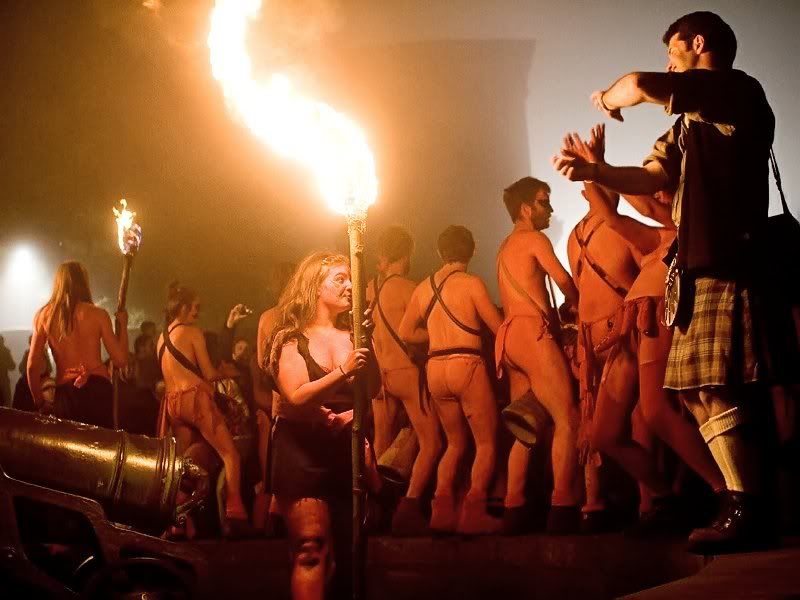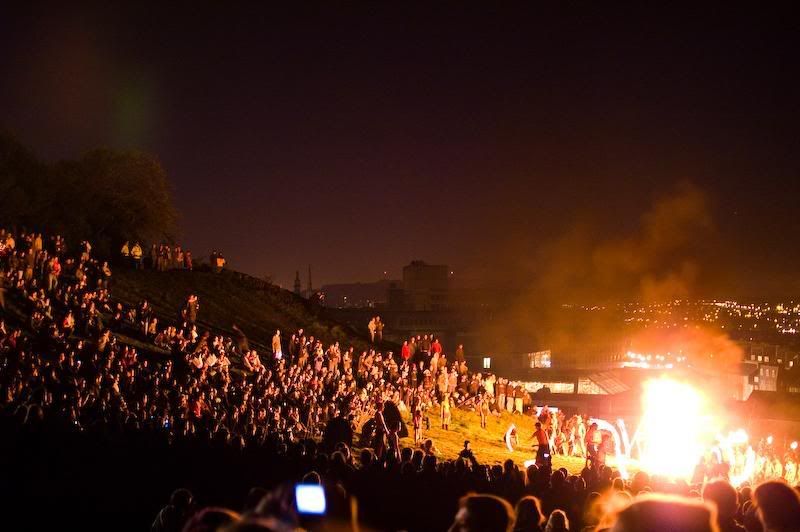Happy Beltane to one and all!!!!
Beltane is a Celtic word which means 'fires of Bel' (Bel was a Celtic deity). It is a fire festival that celebrates of the coming of summer and the fertility of the coming year.Celtic festivals often tied in with the needs of the community. In spring time, at the beginning of the farming calendar, everybody would be hoping for a fruitful year for their families and fields.Beltane rituals would often include courting: for example, young men and women collecting blossoms in the woods and lighting fires in the evening. These rituals would often lead to matches and marriages, either immediately or in the coming summer or autumn.Other festivities involved fire which was thought to cleanse, purify and increase fertility. Cattle were often passed between two fires and the properties of the flame and the smoke were seen to ensure the fertility of the herd.Today Pagans believe that at Beltane the God (to whom the Goddess gave birth at the Winter Solstice) achieves the strength and maturity to court and become lover to the Goddess. So although what happens in the fields has lost its significance for most Pagans today, the creation of fertility is still an important issue.Emma Restall Orr, a modern day Druid, speaks of the 'fertility of our personal creativity'. (Spirits of the Sacred Grove, pub. Thorsons, 1998, pg.110). She is referring to the need for active and creative lives. We need fertile minds for our work, our families and our interests.Fire is still the most important element of most Beltane celebrations and there are many traditions associated with it. It is seen to have purifying qualities which cleanse and revitalise. People leap over the Beltane fire to bring good fortune, fertility (of mind, body and spirit) and happiness through the coming year.Although Beltane is the most overtly sexual festival, Pagans rarely use sex in their rituals although rituals often imply sex and fertility. The tradition of dancing round the maypole contains sexual imagary and is still very popular with modern Pagans.The largest Beltane celebrations in the UK are held in Edinburgh. Fires are lit at night and festivities carry on until dawn. All around the UK fires are lit and private celebrations are held amongst covens and groves (groups of Pagans) to mark the start of the summer. Every year on 30th April on Carlton Hill in Edinburgh thousands of people come together for a huge celebration to mark the coming of summer. The evening begins with a procession to the top of the hill led by people dressed as the May Queen and the Green Man (ancient God and Goddess figures representing fertility and growth).The May Queen crowns the Green Man, in a ritual similar to that carried out by Wiccan Pagans (who follow a structured set of rituals). The winter ends when the Green Man's winter costume is taken from him and he is revealed in his spring costume. A wild dance takes place and the Green Man and the May Queen are married.The main element of any Beltane celebration is fire. On Carlton Hill torchbearers carry purifying flames and fire arches are used to represent the gateways between the earthly world and the spirit world.Most of the imagery used in the costumes and rituals comes from the Celts and from Scottish folklore. Other influences come from indeginous people world wide. For instance, the symbol of Ogun, the Yoruba god of iron, can be seen on the faces of some of the performers, and the Geisha traditions of Japan are evident in the dress of the White Women (assistants of the May Queen). Due to the ecclectic nature of the celebrations, Edinburgh's Beltane is not recognised as a religious ritual by many practising Pagans.
Fire arch ©
The blue paint of the Blue Men refers to the woad used by Celtic warriors.
The May Queen's male consort is the Green Man, sometimes called the May King, Jack-in-the-Green, Robin Hood or the woodland faery Puck.
The Red Men represent mischief makers, Pan-like figures who live for the moment without a care in the world or inhibitions.
The White Woman and her handmaidens protect the May Queen and attend to her later in the evening. They are the order and discipline in the face of the Red Men's chaos.
Torch Bearers are an important, trusted group. Dressed from head to foot in black, with blacked out faces, their hair covered, they are protected from fire and other elements.
These are some pics from last year's Beltane on Calton Hill in Edinburgh!! 











0 Comments
Recommended Comments
Please sign in to comment
You will be able to leave a comment after signing in
Sign In Now